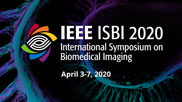Collection:

Liver vessel segmentation from contrast CT images is critical in liver surgical planning and navigation. Due to the complex vessel systems, manual segmentation of liver vessel is laborious and error-prone. In this work we propose liver vessel segmentation deep neural networks which are able to perform the segmentation automatically. Dense image labelling incurred by normal deep learning based segmentation makes it impractical for vessel segmentation. On the contrary, our method only requires a few of initial voxel-level labels, and thus tremendously reduces the workload of manual annotating. A small number of liver vessels are firstly annotated and used to train a sparse dictionary and logistic regressor to get the preliminary vessel predictions. Then the proposed deep neural network is trained based on bootstrapping technique where the training target is a convex combination of the model predictions and those preliminary vessel predictions. Followed by the post-processing step consisting of region connection and noisy removal, the liver vessel tree is finally built from model predictions. Experimental results of3DIRCADb dataset show that the proposed method can effectively extract liver vessel trees from contrast CT images with minimum annotations.The state-of-art results have been achieved on this small dataset with the average dice and sensitivity 0.687?0.041 and 0.786?0.105 respectively.
- IEEE MemberUS $11.00
- Society MemberUS $0.00
- IEEE Student MemberUS $11.00
- Non-IEEE MemberUS $15.00
Videos in this product
Training Liver Vessel Segmentation Deep Neural Networks on Noisy Labels from Contrast CT Imaging
Liver vessel segmentation from contrast CT images is critical in liver surgical planning and navigation. Due to the complex vessel systems, manual segmentation of liver vessel is laborious and error-prone. In this work we propose liver vessel segmentation deep neural networks which are able to perform the segmentation automatically. Dense image labelling incurred by normal deep learning based segmentation makes it impractical for vessel segmentation. On the contrary, our method only requires a few of initial voxel-level labels, and thus tremendously reduces the workload of manual annotating. A small number of liver vessels are firstly annotated and used to train a sparse dictionary and logistic regressor to get the preliminary vessel predictions. Then the proposed deep neural network is trained based on bootstrapping technique where the training target is a convex combination of the model predictions and those preliminary vessel predictions. Followed by the post-processing step consisting of region connection and noisy removal, the liver vessel tree is finally built from model predictions. Experimental results of3DIRCADb dataset show that the proposed method can effectively extract liver vessel trees from contrast CT images with minimum annotations.The state-of-art results have been achieved on this small dataset with the average dice and sensitivity 0.687?0.041 and 0.786?0.105 respectively.
 Cart
Cart Create Account
Create Account Sign In
Sign In
